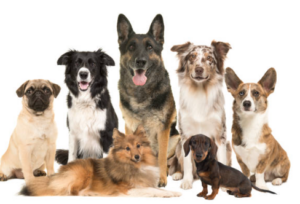The True Price of Purebreds

In a world where luxury and exclusivity often find expression in the choices we make, the allure of a purebred pet stands as a testament to these values. Whether it’s the designer dogs gracing the covers of fashion magazines or the pedigreed cats with bloodlines traced through generations, the acquisition of a purebred companion carries with it an undeniable sense of prestige. The glossy images and carefully crafted pedigrees that accompany these pets seem to promise a lifestyle marked by refinement and sophistication.
However, beneath the surface of this seemingly glamorous world lies a narrative seldom told—one that unravels the hidden costs of choosing a purebred pet. Beyond the allure of picture-perfect animals lies a complex web of financial, ethical, and emotional considerations that often go unnoticed in the excitement of bringing home a pedigreed companion.
In this exploration, we embark on a journey to unveil the true price of purebred pets. It’s a journey that transcends the polished façade of prestige and dives deep into the intricacies of responsible pet ownership. From the initial financial investment to the ethical dilemmas associated with selective breeding and the often-overlooked emotional toll, we shine a spotlight on the multifaceted expenses that accompany the decision to bring a purebred pet into one’s home.
More Than Just the Initial Purchase
- Breeder Prices vs. Shelter Adoption:The cost of acquiring a purebred pet from a breeder can be staggering. Reputable breeders invest time, effort, and resources into producing well-bred animals with desirable traits, and this is reflected in the purchase price. For example, purebred dogs from recognized breeders can range from hundreds to even thousands of dollars, depending on the breed’s rarity and popularity.
In contrast, adopting from a shelter comes with a significantly lower upfront cost. Shelters typically charge adoption fees that cover vaccinations, spaying/neutering, and sometimes microchipping. These fees are a fraction of what one might pay for a purebred, making adoption a more economical choice for those on a budget.
- Hidden Health Costs:Purebred pets often come with a predisposition to specific health issues due to years of selective breeding. Conditions such as hip dysplasia in certain dog breeds or respiratory problems in brachycephalic breeds can necessitate frequent veterinary visits, specialized treatments, and costly medications.
Additionally, some purebred animals may require special diets or supplements to maintain optimal health. These ongoing expenses can accumulate over the pet’s lifespan, adding a substantial financial burden beyond the initial purchase price.
- Reproductive Expenses:For those considering breeding their purebred pets, the financial commitment extends beyond the purchase of the animal itself. Responsible breeding involves pre-breeding health checks, genetic testing to ensure the avoidance of hereditary diseases, and potential cesarean sections for certain breeds prone to birthing complications.
Veterinary care during pregnancy and the subsequent care of the mother and puppies or kittens contribute significantly to the overall cost. The unpredictability of breeding outcomes, including potential complications, means that breeders must be financially prepared for unexpected expenses.
- Insurance and Long-Term Care:Pet insurance is an option that many owners consider to mitigate the financial impact of unexpected veterinary expenses. However, insurance premiums for purebred pets may be higher due to their predisposition to certain health issues. It’s crucial for pet owners to research and understand the terms, coverage, and potential exclusions of pet insurance policies to make informed decisions about their financial commitment.
Additionally, the long-term care of purebred pets, including grooming, high-quality nutrition, and preventive healthcare, contributes to the overall cost. Some breeds require more frequent grooming sessions or specialized diets, which can strain the budget of pet owners who may not have anticipated these ongoing expenses.

Unseen Costs of Selective Breeding
- Inbreeding and Genetic Disorders:The practice of selective breeding, aimed at accentuating specific physical traits, often involves breeding closely related animals. This process, known as inbreeding, increases the risk of genetic disorders and inherited health issues within purebred populations.
While the goal may be to create animals with consistent and desirable characteristics, the unintended consequence is a higher likelihood of health problems. Purebred pets may suffer from conditions such as hip dysplasia, heart disease, or certain types of cancers due to the limited genetic diversity within their bloodlines.
The emotional toll on pet owners dealing with a beloved companion’s health issues can be profound. Watching a pet endure pain or suffer from preventable conditions raises ethical questions about the morality of selective breeding.
- Overpopulation and Shelter Strain:The demand for purebred pets contributes to the overpopulation of animal shelters with mixed-breed animals. The focus on specific breeds perpetuates the perception that only certain types of pets are desirable, leading to an oversaturation of shelters with other breeds and mixed-breed animals.
The unseen cost of this overpopulation is the strain it places on shelter resources. Limited space, budget constraints, and a higher influx of animals can result in compromised living conditions for the animals awaiting adoption. Choosing to support purebred breeding inadvertently fuels the cycle of overpopulation, adding an ethical dimension to the hidden costs associated with these pets.
Opting to adopt from a shelter not only provides a home for an animal in need but also supports the ethical treatment and care of all animals, regardless of their pedigree.
- Behavioral Challenges:Selective breeding for physical traits can sometimes neglect the potential impact on a pet’s behavior. Certain breeds are predisposed to specific behavioral traits, and without proper training and socialization, these traits can become challenging for pet owners to manage.
For example, herding breeds may exhibit heightened instincts to chase or nip, while guardian breeds may display protective behaviors that need careful handling. Behavioral challenges may require the intervention of professional trainers or behaviorists, leading to additional expenses for pet owners.
The ethical dilemma arises when pets face challenges due to their breeding history. Owners must navigate these issues with empathy and a commitment to understanding and meeting their pet’s unique needs, recognizing that some behaviors may be rooted in genetic predispositions.

Emotional Costs
- Loss and Heartache:The emotional investment in a purebred pet, often chosen for specific traits or characteristics, can intensify the grief associated with the loss of a beloved companion. The rarity of some breeds might have played a role in the decision to bring a particular pet into the family, making the experience of loss even more poignant.
Coping with the loss of a purebred pet may involve not only mourning the individual but also grappling with the potential difficulty of finding another pet of the same breed. This emotional journey can be uniquely challenging for pet owners who had invested time, love, and resources into their picture-perfect pet.
- Unrealistic Expectations:The desire for a specific breed often comes with certain expectations regarding appearance, temperament, and behavior. However, the reality is that individual pets, even within the same breed, can vary widely in their personalities and characteristics.
The emotional cost of managing these expectations arises when a pet doesn’t align perfectly with the envisioned ideal. Whether it’s a coat color that deviates from the standard or a personality trait that surprises the owner, reconciling these differences can be emotionally taxing.
Pet owners must navigate the balance between appreciating their pet for who they are and letting go of preconceived notions, fostering a healthier and more fulfilling relationship.
- Breed-Specific Stigma:Some purebred pets come with stereotypes associated with their breeds. Certain breeds may be unfairly labeled as aggressive, high-maintenance, or difficult, perpetuating negative biases.
Pet owners may find themselves facing prejudice from others based on these stereotypes. This can lead to feelings of isolation, frustration, or the need to constantly defend and advocate for their pet’s true nature.
The emotional toll of challenging these biases, educating others, and ensuring fair treatment for their purebred pets can be draining. Pet owners may need to develop resilience and a strong advocacy stance to protect their furry companions from unfair judgments.
- Social Pressures:Choosing a purebred pet can sometimes be influenced by societal pressures, trends, or the desire to fit into a specific community. The emotional cost of succumbing to these pressures is the potential for dissatisfaction or a feeling of inadequacy if the pet doesn’t meet external expectations.
Pet owners must navigate these social pressures and make choices based on their individual circumstances, preferences, and the needs of the pet. This emotional balancing act can be challenging, requiring a strong sense of self-awareness and the ability to prioritize the well-being of the pet over external perceptions.

While the allure of purebred pets is undeniable, it is crucial to acknowledge the hidden costs that come with their acquisition. From the financial burden of health issues to the ethical implications of selective breeding, and the emotional toll of unrealistic expectations, the true price of purebreds extends far beyond the initial purchase. As responsible pet owners, it is essential to weigh these hidden costs carefully and consider alternative options, such as adopting from shelters, to ensure a fulfilling and compassionate relationship with our animal companions. Ultimately, the true worth of a pet lies not in its pedigree but in the love and care it receives in its forever home.

